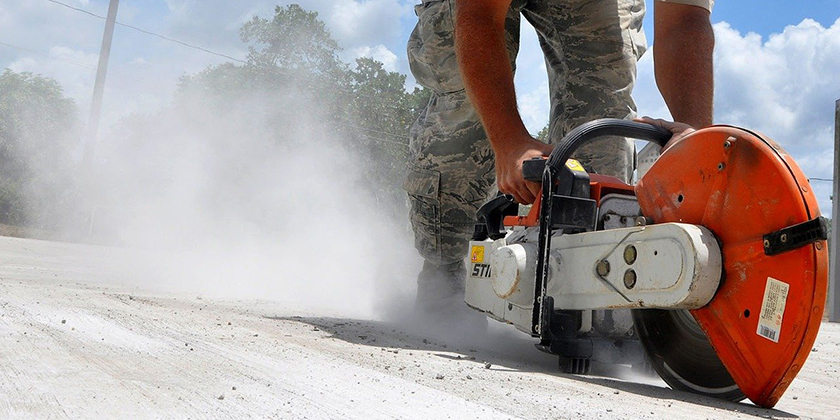Silicosis – How Might It Affect You?
For those that may have not heard about silicosis (a lung disease), it may be a new concept. Yet, there are some individuals that are at a higher risk for being affected by it. In this article we will take a look at What silicosis is, what causes it, and how individuals at risk can reduce their exposure to silicosis.
What is Silicosis?
Silicosis is a lung disease. It that can create chronic breathing problems for those exposed to crystalline silica. When silica builds up in your respiratory system, it can cause scarring that inhibits normal breathing. Symptoms can develop at various times (from a couple years to decades) after exposure. This condition occurs in 3 forms. These forms are:
- Acute – symptoms of acute silicosis can surface in a short period of time; from a few weeks to a couple of years after exposure.
- Accelerated – symptoms develop around five to ten years after exposure and can progress at an accelerated rate.
- Chronic – chronic silicosis is the most common type of silicosis. It may not manifest until decades after the exposure occurs. The exposure may be to low or moderate amounts of silica. Symptoms can be mild and progress slowly over time.
Causes of the Lung Disease Silicosis
What causes this lung disease known as silicosis? It happens after exposure to fine particles of silica crystals through an environment of some kind. Notice the following excerpt taken from The American Lung Association:
Silicosis is a lung disease caused by breathing in tiny bits of silica, a mineral that is part of sand, rock, and mineral ores such as quartz. It mostly affects workers exposed to silica dust in occupations such mining, glass manufacturing, and foundry work.
As mentioned above, exposure often times happens in the work environment. Some occupations are more susceptible than others and are at a greater risk if efforts to reduce the amount of respirable crystalline silica in the work environment. Some of these professions include:
- Miners
- Farmers
- Roofers
- Sandblasters
- Steel Workers
- Masonry Workers
- Plaster Installers
- Glass Manufacturers
- Road Repair Workers
- Construction Workers
- Drywall Installation Pros
Silicosis occurs as a reaction to silica dust build up in the breathing passages of the body. This occurs when silica particles are breathed into the lungs. Then, the particles settle in the passages and form scars in the lungs. The scar tissue and inflammation in the lungs is what causes the breathing problems over time.
Employers of stone professionals can work to reduce the amount of silica by creating work environments that make use of dust collectors and water filtration systems for concrete, granite, amrble, quartz and many other industries.
Symptoms of Silicosis
After exposure to silicosis on the job, the development of the disease might cause a variety of early and later symptoms including the following:
- Phlegm – (Early)
- Fatigue – (Later)
- Blue Lips – (Later)
- Weight Loss – (Later)
- Sudden Fever – (Later)
- Swollen Legs – (Later)
- Pain in Chest – (Later)
- Persistent Cough – (Early)
- Shortness of Breath – (Later)
- Breathing Difficulties – (Early and Later)
Protection from Silicosis Lung Disease
Since some professionals are at a higher level of risk for developing silicosis, there are safety standards and laws designed to help protect workers form exposure to respirable crystalline silica.
By following the safety standards outlined by OSHA and the relevant laws regarding safety you can minimize your exposure risk. Additionally, regular checkups and monitoring can help detect signs of lung disease.

